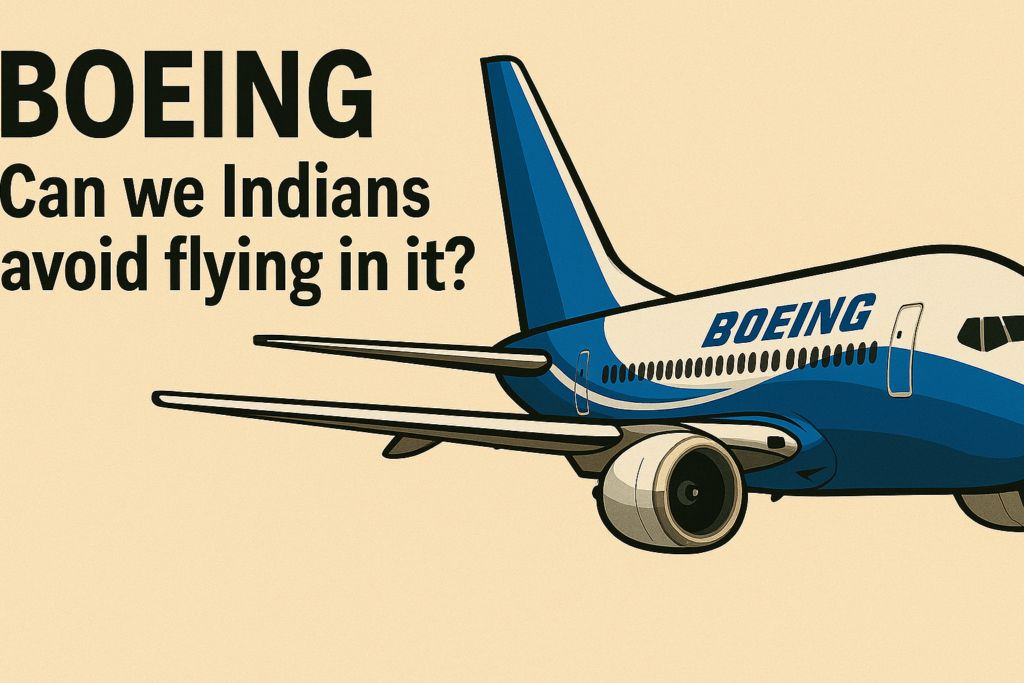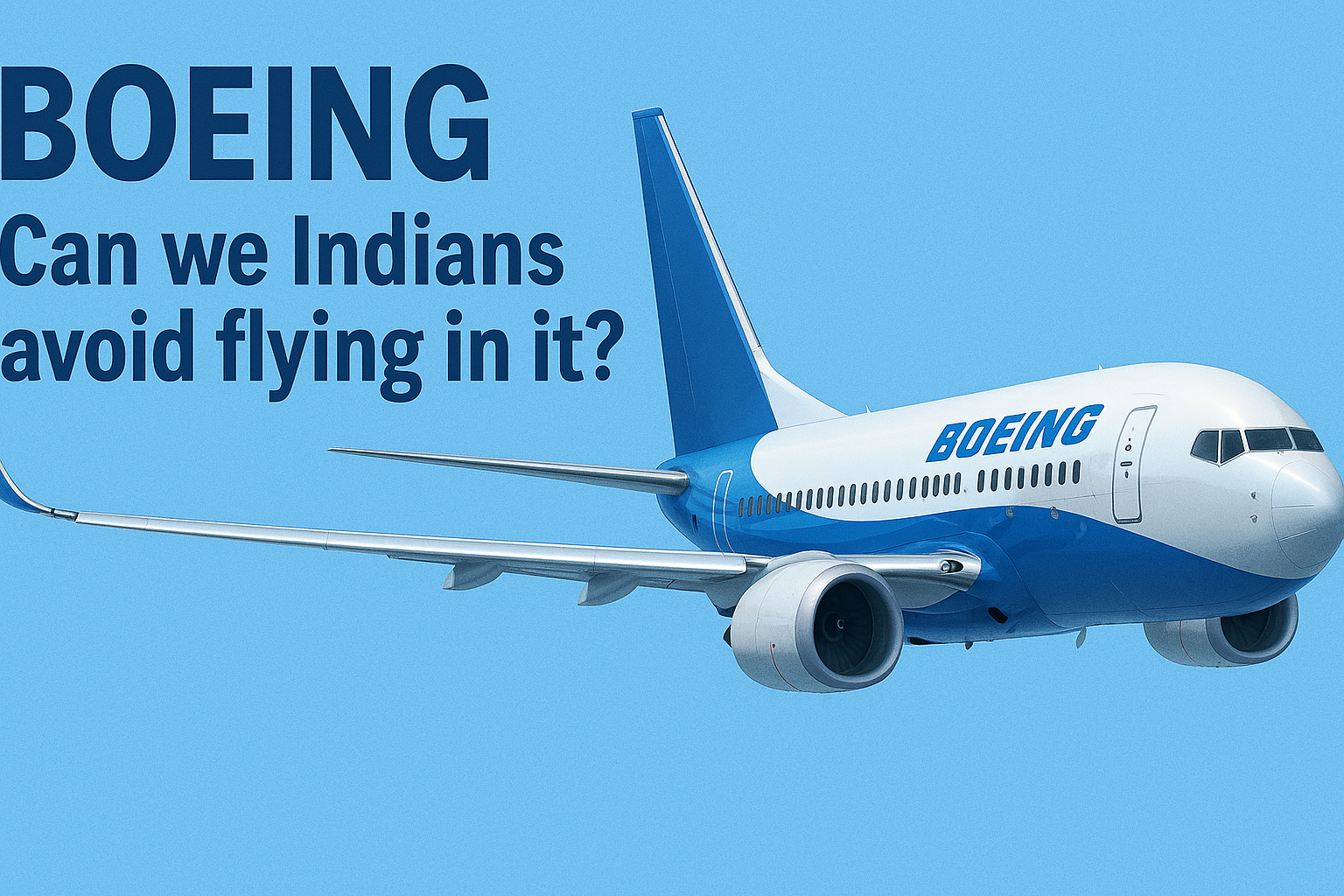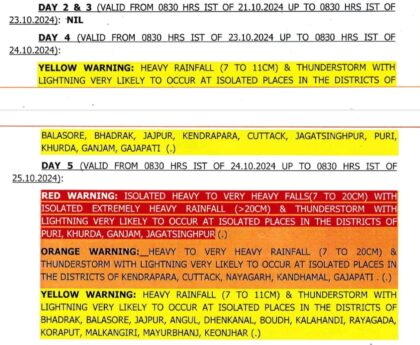Though we know its very difficult to avoid flying in #Boeing as we don’t have much option yet we are trying to give an indicative rough account of the status of Boeing aircraft and different carriers in India, we are not writing for foreign companies. For next 1-2 years, we are advising to avoid foreign travel and if there are any then avoid Boeing till they work on it.
NOTE – GROK, CHAT GPT, X AND GOOGLE HAD HELPED US TO COMPILE THIS!
As of June 2025, several domestic airlines in India operate Boeing aircraft. Below is a detailed breakdown of the airlines, the percentage of Boeing aircraft in their fleets, and the main routes on which these aircraft are deployed, based on available information. Note that exact fleet compositions and route deployments may vary due to operational changes, and the data reflects the most recent information from web sources and posts on X.
Domestic Airlines in India with Boeing Aircraft
Air India
Boeing Fleet Composition: Air India operates a mixed fleet of Airbus and Boeing aircraft. As of June 2025, Air India’s total fleet consists of 194 aircraft, with 43 being Boeing aircraft (Boeing 777 and Boeing 787). This translates to approximately 22.2% Boeing aircraft in its fleet.
Main Routes: Air India deploys its Boeing 777 and 787 aircraft primarily on high-density domestic routes and for aircraft rotation to position them for international flights. Key domestic routes include:
Delhi-Mumbai: The busiest domestic route in India, with Air India operating widebody Boeing 777s and occasionally 787s to meet high demand and slot constraints at major airports.
Delhi-Bengaluru: Air India has used Boeing 777s on this route, replacing earlier 787 operations, to cater to corporate and tech-related traffic.
Delhi-Chennai and Delhi-Kolkata: These longer domestic sectors see occasional widebody Boeing deployments for capacity and premium service offerings.
Notes: Air India’s use of widebody Boeing aircraft on domestic routes is partly driven by slot constraints and the need to maintain market share with premium products. The Boeing 787s and 777s offer more legroom and comfort, particularly in business class, compared to narrowbody aircraft.
Air India Express (including AIX Connect)
Boeing Fleet Composition: Air India Express operates a fleet of Boeing 737-800 and Boeing 737 MAX 8 aircraft. As of September 2024, the airline’s fleet size is 88 aircraft, all of which are Boeing 737 variants, making it 100% Boeing. The airline received 50 Boeing 737 MAX aircraft originally intended for Chinese airlines, with deliveries ongoing through April 2025.
Main Routes: Air India Express focuses on non-trunk routes with leisure and price-sensitive customers, feeding into Air India’s long-haul network. Key domestic routes include:
Mumbai-Delhi: Operates Boeing 737s on this high-frequency route, though primarily as a feeder for international connections.
Bengaluru-Hyderabad, Bengaluru-Kochi, Kozhikode-Delhi: These routes connect tier-2 cities and hubs, leveraging the efficiency of the 737 fleet.
Other routes include smaller cities like Mangalore, Thiruvananthapuram, and Kannur, aligning with the airline’s focus on regional connectivity.
Notes: The merger of AIX Connect (formerly AirAsia India) with Air India Express, completed in October 2024, consolidated the Boeing 737 fleet, enhancing operational efficiency on short-haul domestic and international routes.
Akasa Air
Boeing Fleet Composition: Akasa Air operates an all-Boeing fleet of Boeing 737 MAX 8 and Boeing 737 MAX 200 aircraft. As of June 2025, the airline has 19 aircraft in service, with orders for an additional 206, making it 100% Boeing.
Main Routes: Akasa Air operates on major metro-to-metro routes, focusing on affordability and sustainability. Key domestic routes include:
Mumbai-Delhi: A high-demand route with frequent Boeing 737 MAX flights.
Mumbai-Bengaluru: Connecting India’s financial and IT capitals, this route sees significant business and leisure traffic.
Delhi-Pune and Delhi-Hyderabad: These routes benefit from corporate and industrial demand, with Akasa Air deploying its 737 MAX fleet.
Notes: Akasa Air’s rapid expansion and focus on modern, fuel-efficient Boeing 737 MAX aircraft position it as a growing player in the low-cost segment.
SpiceJet
Boeing Fleet Composition: SpiceJet operates a fleet primarily consisting of Boeing 737 aircraft, including Boeing 737-800 and 737 MAX models. As of June 2025, SpiceJet has 46 aircraft, all Boeing, making it 100% Boeing.
Main Routes: SpiceJet focuses on both metro and tier-2 city connectivity, with key domestic routes including:
Delhi-Mumbai: A core route with multiple daily flights using Boeing 737s.
Delhi-Bengaluru and Mumbai-Bengaluru: High-frequency routes catering to business and leisure travelers.
Delhi-Srinagar, Delhi-Goa, and other tier-2 routes like Ahmedabad-Pune: SpiceJet leverages its 737 fleet for regional connectivity under the UDAN scheme.
Notes: SpiceJet’s all-Boeing fleet supports its low-cost model, but the airline has faced financial challenges, impacting its operational scale.
Summary of Boeing Aircraft Percentages
Air India: ~22.2% Boeing (43 out of 194 aircraft, including Boeing 777 and 787).
Air India Express: 100% Boeing (88 Boeing 737-800 and 737 MAX aircraft).
Akasa Air: 100% Boeing (19 Boeing 737 MAX aircraft, with 206 on order).
SpiceJet: 100% Boeing (46 Boeing 737 aircraft).
Main Domestic Routes for Boeing Aircraft
The busiest domestic routes in India, as identified in recent data, where Boeing aircraft are frequently deployed include:
Delhi-Mumbai: The busiest route, served by Air India (Boeing 777/787), Air India Express (Boeing 737), Akasa Air (Boeing 737 MAX), and SpiceJet (Boeing 737). This route sees high business and leisure demand.
Delhi-Bengaluru: Served by Air India (Boeing 777), Akasa Air (Boeing 737 MAX), and SpiceJet (Boeing 737), driven by tech and corporate traffic.
Mumbai-Bengaluru: Operated by Akasa Air and SpiceJet with Boeing 737s, connecting financial and IT hubs.
Delhi-Hyderabad: Served by Air India Express, Akasa Air, and SpiceJet with Boeing 737s, supporting Hyderabad’s IT and pharmaceutical sectors.
Delhi-Chennai and Delhi-Kolkata: Air India occasionally deploys Boeing 777s for capacity on these longer routes.
Market Dynamics: The Indian domestic market is dominated by low-cost carriers, with IndiGo holding a 61% market share, followed by Air India (14.2%). Boeing aircraft, particularly the 737 series, are critical for low-cost carriers like Air India Express, Akasa Air, and SpiceJet, while Air India uses Boeing widebodies for premium services and aircraft rotation.
Recent Developments: Air India’s massive order of 220 Boeing aircraft (including 190 737 MAX, 20 787s, and 10 777Xs) and Akasa Air’s order of 206 Boeing 737 MAX aircraft indicate a growing Boeing presence in India.
Challenges: Boeing’s reputation has faced scrutiny due to recent safety concerns, including a fatal Air India 787 crash in Ahmedabad in June 2025. This may influence future fleet decisions, though no fault has been confirmed with Boeing in that incident.
Note: Fleet percentages and route details are based on the latest available data as of June 2025. Operational changes may occur, and exact route schedules may vary. For the most current information, check with the respective airlines’ websites or flight tracking services like FlightAware.
Additional Notes
IndiGo’s Limited Boeing Presence: IndiGo, India’s largest airline with a fleet of 358 aircraft, operates predominantly Airbus A320/A321 aircraft, with only a small fraction (~2.5–3%) being Boeing 777s leased from Turkish Airlines for specific routes. Thus, IndiGo is not primarily a Boeing operator.
IndiGo’s Boeing Aircraft and Operations
Boeing Fleet Composition:
IndiGo, India’s largest airline, primarily operates Airbus aircraft (A320neo, A321neo, and A320ceo), with a fleet of 358 aircraft as of June 2025. However, IndiGo has recently incorporated a small number of Boeing 777-300ER aircraft, leased from Turkish Airlines, into its fleet for specific high-density routes. As of the latest data, IndiGo operates 3 Boeing 777s, which constitute approximately 0.84% of its total fleet (3 out of 358 aircraft).
These Boeing 777s are widebody aircraft, unlike the predominantly narrowbody Airbus fleet, and are used to meet high demand and slot constraints on select routes.
Main Routes for Boeing Aircraft:
IndiGo deploys its Boeing 777s on limited high-density domestic routes, primarily to augment capacity and position aircraft for international operations. The key domestic route is:
Delhi-Mumbai: India’s busiest domestic corridor, where IndiGo uses the Boeing 777s to offer additional capacity, particularly during peak travel periods. This route sees significant business and leisure traffic, and the widebody aircraft allow IndiGo to compete with Air India’s premium offerings (which also use Boeing 777s and 787s on this route).
Other Potential Routes: While primarily focused on Delhi-Mumbai, IndiGo may occasionally deploy the 777s on other high-demand routes like Delhi-Bengaluru or Delhi-Hyderabad, though these are less frequent and typically served by Airbus narrowbodies.
Additional Notes:
Limited Boeing Presence: IndiGo’s fleet is overwhelmingly Airbus-dominated (over 99% Airbus), with the Boeing 777s representing a strategic addition to handle capacity constraints and enhance premium offerings (e.g., lie-flat business class seats) on select routes.
Operational Strategy: The use of Boeing 777s is driven by slot restrictions at major airports like Delhi and Mumbai, where widebody aircraft allow IndiGo to carry more passengers per flight. These aircraft also support IndiGo’s expansion into long-haul international routes, such as Delhi-Istanbul, but this is outside the domestic scope.
Market Context: IndiGo holds a 61% market share in India’s domestic market, and its limited use of Boeing aircraft reflects its focus on cost-efficient Airbus narrowbodies for most domestic operations. The Boeing 777s are an exception, aimed at capturing premium demand and addressing operational needs.
Sources:
Web sources: Information on IndiGo’s fleet and routes from aviation websites and news reports as of June 2025.
X posts: Limited mentions of IndiGo’s Boeing 777 operations, primarily referencing leased aircraft for Delhi-Mumbai.
Note: The exact deployment of IndiGo’s Boeing 777s may vary based on scheduling and operational needs. For real-time route details, check IndiGo’s official website or flight tracking platforms like FlightAware.
Below is a list of notable incidents and accidents involving Boeing and Airbus commercial aircraft from 2000 to 2025, compiled based on available data from web sources and posts on X. The list includes significant crashes with fatalities or hull losses, ordered chronologically. Each incident is hyperlinked to “Click Here” for further details, directing to relevant sources where possible. Note that this is not an exhaustive list of all incidents, as minor incidents without fatalities or significant damage are excluded. Additionally, some recent incidents (e.g., 2025) may lack confirmed details due to ongoing investigations.
Boeing and Airbus Incidents/Accidents (2000–2025)
2000
- January 31, 2000 – Boeing 737-300 (Alaska Airlines Flight 261)
Location: Pacific Ocean near Point Mugu, California, USA
Fatalities: 88 (all)
Cause: Loss of control due to a jackscrew failure in the horizontal stabilizer.
Source: Click Here - August 23, 2000 – Airbus A320-200 (Gulf Air Flight 072)
Location: Persian Gulf near Muharraq, Bahrain
Fatalities: 143 (all)
Cause: Controlled flight into terrain due to pilot error during a go-around.
Source: Click Here
2001
- September 11, 2001 – Boeing 767-200 (American Airlines Flight 11)
Location: World Trade Center, New York City, USA
Fatalities: 92 (on board) + ~1,600 on ground
Cause: Terrorist hijacking; crashed into North Tower.
Source: Click Here - September 11, 2001 – Boeing 757-200 (United Airlines Flight 175)
Location: World Trade Center, New York City, USA
Fatalities: 65 (on board) + ~900 on ground
Cause: Terrorist hijacking; crashed into South Tower.
Source: Click Here - September 11, 2001 – Boeing 757-200 (American Airlines Flight 77)
Location: Pentagon, Arlington, Virginia, USA
Fatalities: 64 (on board) + 125 on ground
Cause: Terrorist hijacking; crashed into Pentagon.
Source: Click Here - September 11, 2001 – Boeing 757-200 (United Airlines Flight 93)
Location: Shanksville, Pennsylvania, USA
Fatalities: 44 (all)
Cause: Terrorist hijacking; crashed after passenger revolt.
Source: Click Here - November 12, 2001 – Airbus A300-600 (American Airlines Flight 587)
Location: Queens, New York, USA
Fatalities: 265 (all on board + 5 on ground)
Cause: Loss of control due to excessive rudder inputs by the pilot, leading to vertical stabilizer failure.
Source: Click Here
2002
- May 25, 2002 – Boeing 747-200 (China Airlines Flight 611)
Location: Taiwan Strait near Penghu Islands, Taiwan
Fatalities: 225 (all)
Cause: Structural failure due to improper repairs on the rear pressure bulkhead.
Source: Click Here
2003
- February 1, 2003 – Boeing 747-400 (Space Shuttle Columbia, not commercial)
Location: Texas, USA (re-entry)
Fatalities: 7 (all)
Cause: Damage to wing from foam impact during launch; not a commercial flight but included due to Boeing’s involvement.
Source: Click Here
2005
- August 14, 2005 – Boeing 737-300 (Helios Airways Flight 522)
Location: Grammatiko, Greece
Fatalities: 121 (all)
Cause: Loss of cabin pressurization leading to crew incapacitation; crashed due to fuel exhaustion.
Source: Click Here
2006
- July 9, 2006 – Airbus A310-300 (S7 Airlines Flight 778)
Location: Irkutsk, Russia
Fatalities: 125 (of 203)
Cause: Runway overrun during landing due to reverse thrust failure and pilot error.
Source: Click Here - October 29, 2006 – Boeing 737-800 (Gol Transportes Aéreos Flight 1907)
Location: Mato Grosso, Brazil
Fatalities: 154 (all)
Cause: Mid-air collision with an Embraer Legacy 600 due to air traffic control errors.
Source: Click Here
2007
- May 5, 2007 – Boeing 737-800 (Kenya Airways Flight 507)
Location: Douala, Cameroon
Fatalities: 114 (all)
Cause: Loss of control after takeoff due to pilot error and spatial disorientation.
Source: Click Here
2008
- August 20, 2008 – Boeing 737-200 (Spanair Flight 5022)
Location: Madrid, Spain
Fatalities: 154 (of 172)
Cause: Takeoff with improper flap configuration due to maintenance and pilot errors.
Source: Click Here
2009
- June 1, 2009 – Airbus A330-200 (Air France Flight 447)
Location: Atlantic Ocean near Brazil
Fatalities: 228 (all)
Cause: Loss of control due to pitot tube icing, leading to unreliable airspeed readings and pilot error.
Source: Click Here - June 30, 2009 – Airbus A310-300 (Yemenia Flight 626)
Location: Indian Ocean near Comoros
Fatalities: 152 (of 153)
Cause: Loss of control during approach, attributed to pilot error.
Source: Click Here
2010
- May 22, 2010 – Boeing 737-800 (Air India Express Flight 812)
Location: Mangalore, India
Fatalities: 158 (of 166)
Cause: Runway overrun during landing due to pilot error and fatigue.
Source: Click Here - July 28, 2010 – Airbus A321-200 (Airblue Flight 202)
Location: Islamabad, Pakistan
Fatalities: 152 (all)
Cause: Controlled flight into terrain due to pilot error and poor weather.
Source: Click Here
2013
- April 29, 2013 – Boeing 747-400F (National Airlines Flight 102)
Location: Bagram, Afghanistan
Fatalities: 7 (all)
Cause: Cargo shift during takeoff, leading to loss of control.
Source: Click Here
2014
- March 8, 2014 – Boeing 777-200 (Malaysia Airlines Flight 370)
Location: Unknown (presumed Indian Ocean)
Fatalities: 239 (all, presumed)
Cause: Unresolved; suspected deviation from flight path, possibly due to intentional act or systems failure.
Source: Click Here - July 17, 2014 – Boeing 777-200 (Malaysia Airlines Flight 17)
Location: Donetsk, Ukraine
Fatalities: 298 (all)
Cause: Shot down by a surface-to-air missile during conflict.
Source: Click Here - December 28, 2014 – Airbus A320-200 (Indonesia AirAsia Flight 8501)
Location: Java Sea, Indonesia
Fatalities: 162 (all)
Cause: Loss of control due to rudder system malfunction and pilot error.
Source: Click Here
2015
- March 24, 2015 – Airbus A320-200 (Germanwings Flight 9525)
Location: French Alps, France
Fatalities: 150 (all)
Cause: Intentional crash by co-pilot during descent.
Source: Click Here
2018
- October 29, 2018 – Boeing 737 MAX 8 (Lion Air Flight 610)
Location: Java Sea, Indonesia
Fatalities: 189 (all)
Cause: Loss of control due to faulty Maneuvering Characteristics Augmentation System (MCAS) and inadequate pilot training.
Source: Click Here
2019
- March 10, 2019 – Boeing 737 MAX 8 (Ethiopian Airlines Flight 302)
Location: Bishoftu, Ethiopia
Fatalities: 157 (all)
Cause: Loss of control due to MCAS malfunction, similar to Lion Air Flight 610.
Source: Click Here
2020
- January 8, 2020 – Boeing 737-800 (Ukraine International Airlines Flight 752)
Location: Tehran, Iran
Fatalities: 176 (all)
Cause: Shot down by Iranian military surface-to-air missiles.
Source: Click Here - August 7, 2020 – Boeing 737-800 (Air India Express Flight 1344)
Location: Kozhikode, India
Fatalities: 21 (of 190)
Cause: Runway overrun during landing in heavy rain, attributed to pilot error and poor weather.
Source: Click Here
2022
- March 21, 2022 – Boeing 737-800 (China Eastern Airlines Flight 5735)
Location: Wuzhou, China
Fatalities: 132 (all)
Cause: Suspected intentional act by pilot; investigation inconclusive.
Source: Click Here
2024
- January 5, 2024 – Boeing 737 MAX 9 (Alaska Airlines Flight 1282)
Location: Portland, USA (non-fatal)
Fatalities: None
Cause: Mid-air door plug component blowout; emergency landing.
Source: Click Here
2025
- June 12, 2025 – Boeing 787-8 (Air India Flight 127)
Location: Ahmedabad, India
Fatalities: Unknown (significant casualties reported)
Cause: Under investigation; preliminary reports suggest possible technical failure or pilot error.
Source: Click Here
Notes
- Scope: The list includes fatal crashes, hull losses, or high-profile incidents (e.g., Alaska Airlines 2024 blowout) involving Boeing and Airbus commercial aircraft. Minor incidents, such as turbulence or non-fatal runway excursions, are excluded unless significant.
- Data Limitations: Some 2025 incident details are preliminary due to ongoing investigations. Exact fatality counts and causes may be updated as more information becomes available.
- Boeing vs. Airbus: Boeing incidents are more numerous in this period, partly due to its larger fleet size and older models (e.g., 737-200/300). Airbus incidents are fewer but include significant events like Air France 447 and Germanwings 9525. Normalized data suggests Boeing has a higher incident rate per departure, though direct comparisons are complex due to operational differences.
- Sources: Most incidents are sourced from Wikipedia for consistency and detailed reports. X posts provide sentiment and context for recent events but are treated as inconclusive without corroboration.
Disclaimer: Incident causes are simplified based on final or preliminary reports. For detailed investigations, refer to official reports from aviation authorities like the NTSB, EASA, or DGCA. Always cross-check recent incidents, especially those from 2025, as details may evolve.

IndiGo fleet expansion
Airbus aircraft in India
Can you avoid Boeing Planes in India?
How safe/unsafe are Boeing planes?
Are Boeing the flying coffins?
Are Boeing the new flying coffins?




